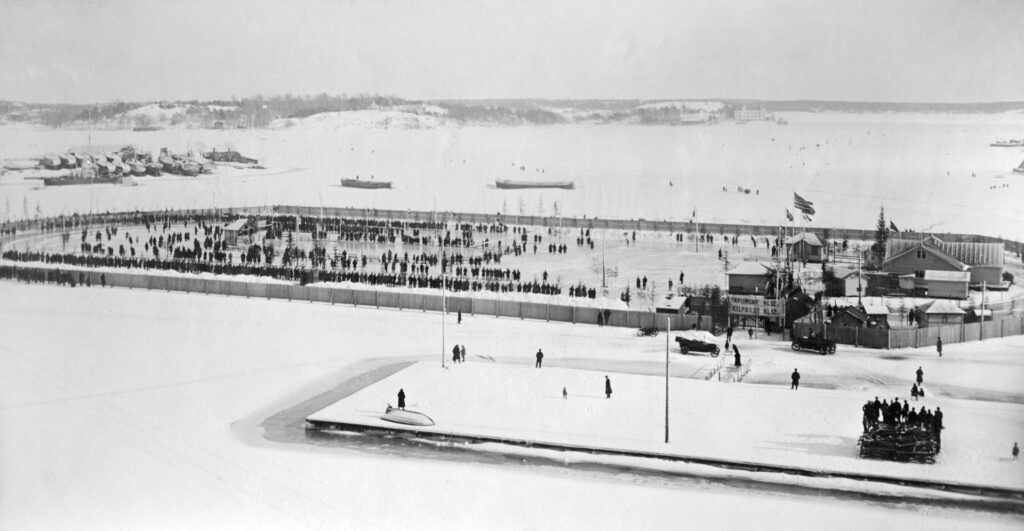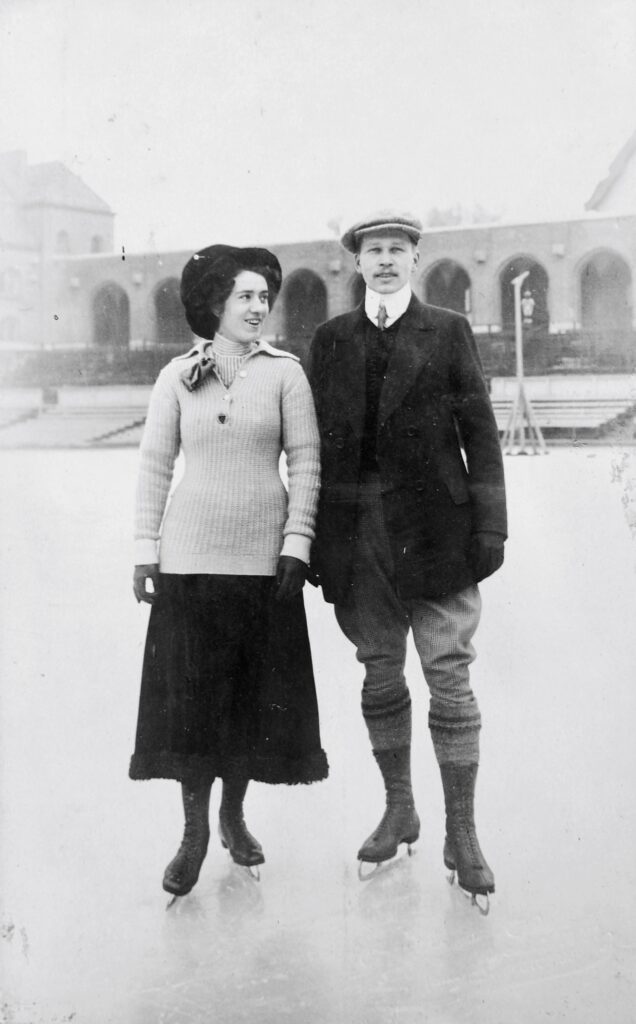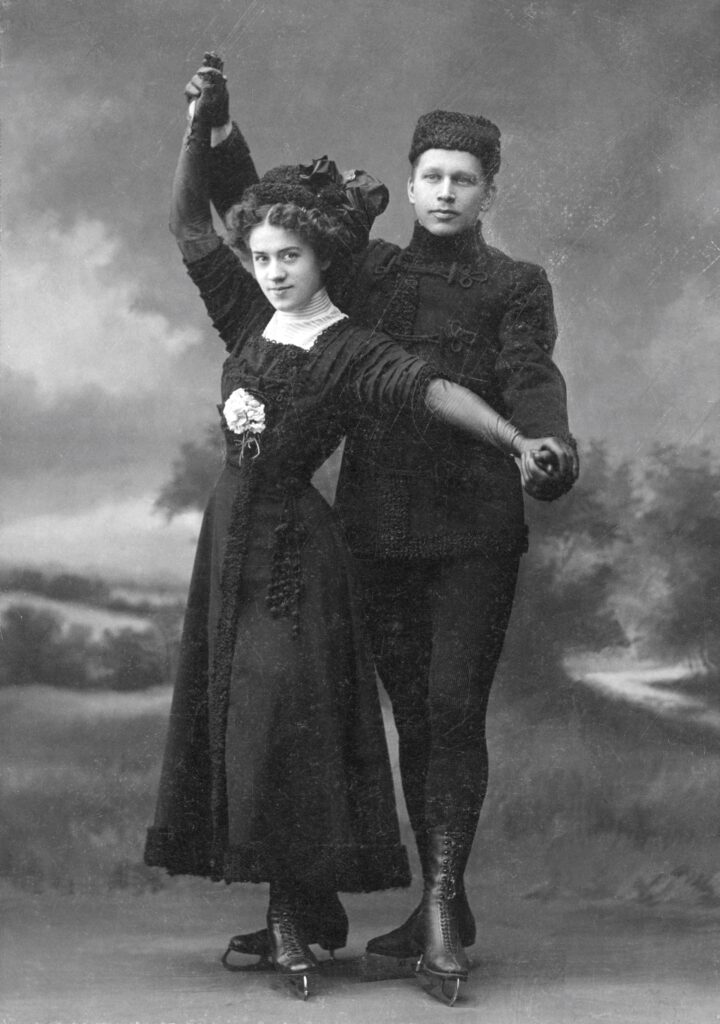“Bitte mein Herr”
With roughly these words, the joint skating practice of the German Ludowika Eilers and Finnish engineering student Walter Jakobsson started at the Berlin’s new ice palace in 1908. This moment can be considered the starting point for two significant events. On a personal level, the decision led to the young couple’s marriage in 1911. Moreover, it sealed independent Finland’s first Olympic victory in 1920.
The young German woman, Ludowika Eilers, impressed the Finns, who had come to the ice palace by chance, with her presence and skilled skating. The most impressed of the Finns was Walter Jakobsson, who had come to the city for his studies and was seriously involved in skating.


Skating was a passion for both Ludowika and Walter, and the couple moved to Helsinki soon after they married – to “the land of snow and ice,” as Ludowika notes in her memoirs. Moving to the north from the bustling social life of Central Europe’s major cities, as well as friends and relatives, was not easy for her. Ice palaces adorned with crystals and mirrors were left behind and replaced with natural ice at the mercy of the weather.


It was difficult for Ludowika to understand her husband’s admiration for Helsinki. The city appeared small and rural. Fortunately, it was in a beautiful location by the sea, and it had a long winter with snow and ice. On the other hand, frequent participation in major international competitions took the couple around the world. Life was not just about Helsinki. In Helsinki, Ludowika joined Helsingfors Skridskoklubb [Helsinki Skating Club], of which Walter Jakobsson had been an active member for a long time.


What was it in the young Finn that made an impression in Ludowika Eilers and caught her attention? Decades later, she herself recalled it being Walter Jakobsson’s serious attitude towards skating, his perseverance to become a better skater, and his idea of seeing figure skating as a means to develop mentally. Ludowika noticed a similar mindset also among other skaters in the Helsingfors Skridskoklubb. People had faith in their abilities and the future, even though the structures of the world and Europe were becoming more and more turbulent.


Ludowika Eilers’ move to Finland was an individual choice born of great and enduring love. It also included a belief in a shared mission. The figure skating couple wanted to develop, succeed, and develop Finnish skating. Their results in competitions were impressive; three World Championship gold medals, four World Championship silver medals, and as the crowning glory of their careers, the Olympic gold medal in 1920 and the Olympic silver medal in 1924. The couple continued to be active in the Helsingfors Skridskoklubb long after their competitive sports careers and were also familiar faces in the international skating circles.
This immigration story is a success story. Ludowika Eilers came to Finland for love, represented her new homeland, and left a legacy that “the land of snow and ice” can and should be proud of. For the present day, her story offers a lesson even more valuable than sports success. Her integration into the country was aided by a community where she was supported and valued.




